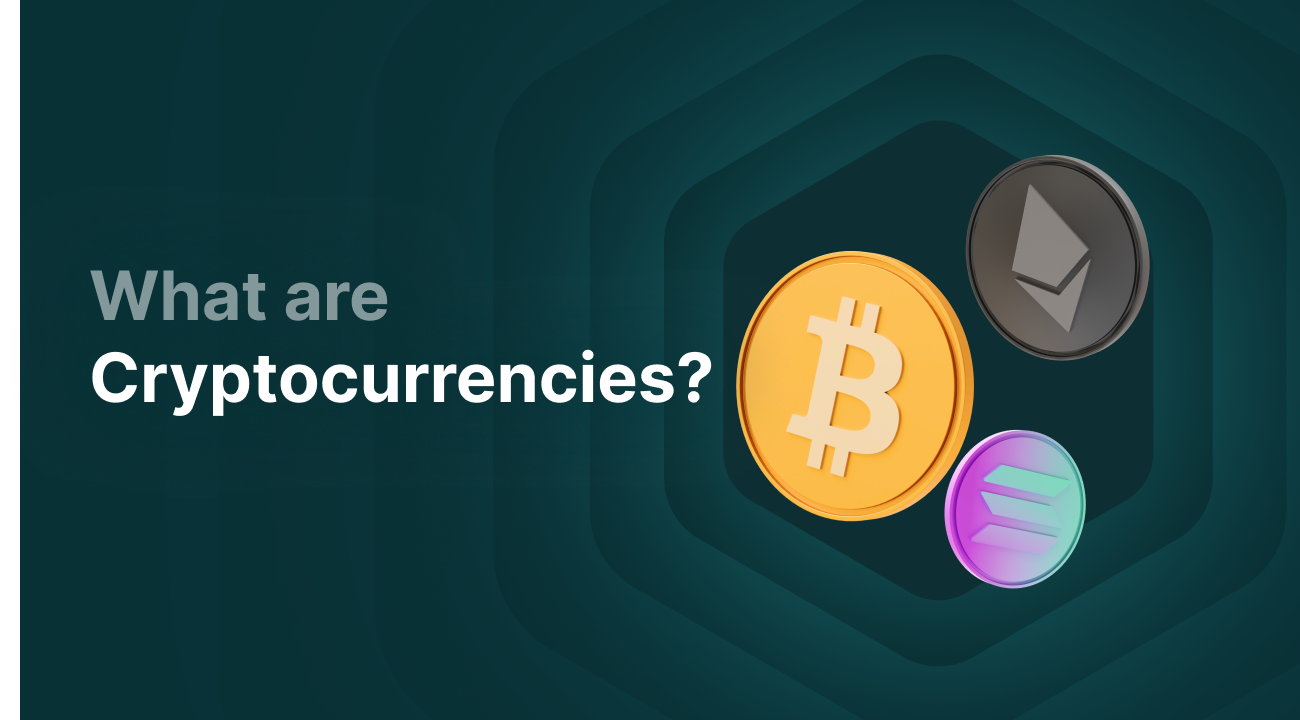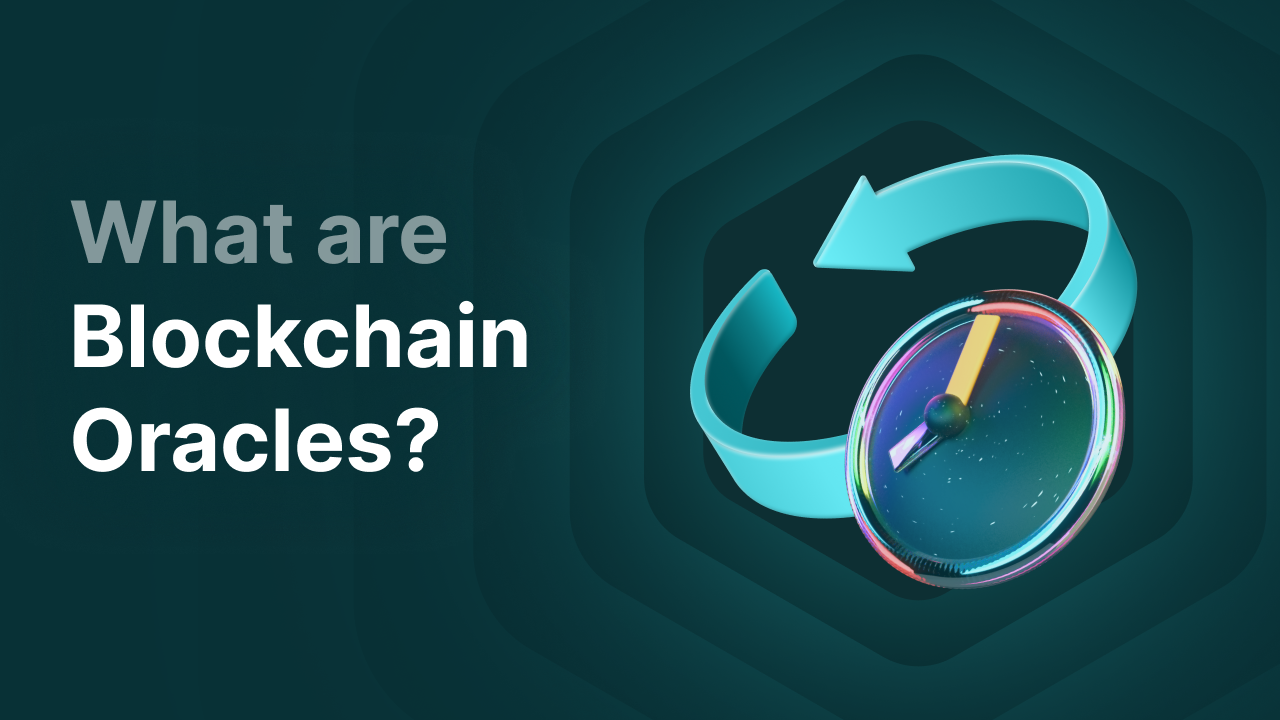Everything You Need to Know About Cryptocurrencies

What is cryptocurrency?
Cryptocurrency, also referred to as crypto, is a digital or virtual currency secured by cryptography. The term "cryptocurrency" is a combination of cryptography and currency. The most well-known and first cryptocurrency is Bitcoin, which was launched in 2009 by Satoshi Nakamoto. Most people use crypto as an investment, but today it is much more than that. There are now millions of cryptocurrencies, all with different properties and use cases.
The most important feature of cryptocurrency is that it is decentralized, meaning there is no central authority that controls the system, unlike traditional (fiat) currencies. In the case of cryptocurrencies, participants in the network (also known as nodes) are responsible for managing the network. They ensure that transactions and processes on the network are processed.
Cryptocurrencies operate on blockchains, which make them extremely secure. Blockchains ensure that transactions are secured with cryptography and are almost always immutable. Most blockchains are also open-source, making them accessible to everyone. These strong features have made cryptocurrency increasingly popular worldwide over the years.
Key Takeaways
- Cryptocurrencies are digital coins that function without a central authority and use blockchain technology for security and transparency.
- The blockchain is a decentralized ledger where transactions are stored in blocks using cryptography.
- There are millions of different cryptocurrencies, including coins with their own blockchain and tokens that run on other existing networks such as Ethereum.
- Crypto has various applications, such as being a payment method or investment, and also granting access to smart contracts, NFTs, and DeFi.
- Advantages of crypto include decentralization, transparency, and security.
- Disadvantages of crypto include volatility, technical complexity, and high energy consumption.
How Does Cryptocurrency Work?
Crypto operates on blockchain technology. Each cryptocurrency has its own blockchain or runs on the blockchain of other cryptocurrencies. On the blockchain, all transactions are recorded publicly. A blockchain consists of blocks that are linked in chronological order, like a chain. Each block contains information about transactions that have occurred on the network.
Every user on the network needs a crypto wallet. This is a kind of digital wallet where you store your crypto. A crypto wallet consists of two key components: public keys and private keys. The public key is like an address for your wallet that others can use to send crypto to you. You can compare it to a bank account number. The private key is like a password that gives you access to your crypto and allows you to sign transactions. The private key is the most important of the two: if you lose it, you lose access to your cryptocurrencies.
When someone wants to make a crypto transaction, it is validated by nodes (computers that process transactions). The way this is done depends on the consensus algorithm the blockchain uses. The best-known crypto, Bitcoin, uses the Proof of Work (PoW) consensus algorithm. This system uses miners who solve cryptographic puzzles to add new blocks to the network and earn BTC in return. Proof of Work requires a lot of computing power and therefore consumes a lot of energy. Another consensus mechanism is Proof of Stake (PoS), which is used by Ethereum, for example. In PoS, validators stake coins to process transactions on the network.
Different Types of Cryptocurrencies
Since the launch of the first cryptocurrency, Bitcoin, many other cryptocurrencies have emerged. Many people saw the powerful features of Bitcoin and came up with ways to further develop cryptocurrency. The decentralized nature of crypto ensures security and transparency, which created many opportunities for developers. As a result, there are now millions of different cryptocurrencies.
Bitcoin
Bitcoin is the very first cryptocurrency, introduced in 2008 through a whitepaper by an anonymous individual or group using the pseudonym Satoshi Nakamoto. This whitepaper outlined the idea of Bitcoin as a decentralized means of payment, independent of banks and governments. It was also meant to combat inflation, a response to the U.S. financial crisis in 2008. Bitcoin was launched in 2009.
Bitcoin's blockchain uses Proof of Work technology, where miners compete to solve complex mathematical puzzles. The first one to solve the puzzle receives new BTC. In Bitcoin’s early years, miners received 50 BTC as a reward, but due to several halvings, miners now receive only 3.125 BTC. There will only ever be a maximum of 21,000,000 BTC in circulation, which is why many see Bitcoin as "digital gold."
Bitcoin was the first practical implementation of a blockchain and a payment system that replaced trust with cryptography and transparency.
Altcoins
Altcoins are all cryptocurrencies developed after Bitcoin. They are also called "alternative coins." Each altcoin has its own goal, technology, and use case. Altcoins can be divided into coins and tokens. Coins are cryptocurrencies with their own blockchain, while tokens are built on another blockchain. These are the main types of altcoins:
- Stablecoins: Stablecoins are cryptocurrencies whose value is pegged to a stable asset, such as the U.S. dollar. This makes their price stable, making them suitable as a payment method. Example: USD Coin
- Technological coins: Cryptocurrencies used to build and run decentralized applications (dApps). These coins use smart contracts, allowing developers to automate agreements without a third party. Example: Ethereum (ETH)
- DeFi tokens: These tokens grant access to Decentralized Finance (DeFi), an ecosystem that provides financial services without intermediaries. These tokens also use smart contracts. Example: Aave
- Governance tokens: These tokens give users voting rights on key decisions in a project’s development. Example: Maker (MKR)
- Utility tokens: These are tokens used on specific blockchains to access services. Example: ETH on the Ethereum network
- Meme coins: Meme coins are often launched as jokes based on internet memes. They usually have no clear purpose but can become popular quickly. Example: Dogecoin (DOGE)
What’s the Difference Between Fungible and Non-Fungible Tokens (NFTs)?
Cryptocurrencies can also be categorized as fungible or non-fungible tokens (NFTs). Fungible tokens are cryptocurrencies that are interchangeable with one another—each token has the same value and properties. For example, with Bitcoin or Ethereum, each coin is identical and equally valuable. Non-fungible tokens (NFTs), on the other hand, are unique. An NFT represents a specific digital item, such as artwork or a collectible, and therefore has a unique value. Fungible tokens are mainly used as payment methods or investments, while NFTs serve as proof of ownership.
How to Buy Cryptocurrencies
Most people buy crypto with the goal of making a profit. In a perfect scenario, you would buy at the lowest price and sell at the highest, but since no one can predict the market, that is usually impossible. Others buy crypto because they are interested in a particular project or service. In short: there are many reasons to buy crypto. Here’s how and where to do it.
Where to Buy and Sell Crypto?
You can buy crypto on centralized exchanges (CEX), decentralized exchanges (DEX), and through crypto brokers.
A centralized exchange (CEX) is a trading platform run by a company or organization, such as Binance, where buyers and sellers are matched. You must verify your identity in your account on a CEX. These platforms are often user-friendly and offer many features, but you rely on the platform’s own security.
A decentralized exchange (DEX) is a platform where you can trade crypto without an intermediary, such as Uniswap. You must connect your own wallet to the platform, giving you more control and privacy. A DEX usually requires more technical knowledge and experience.
A crypto broker is a third party where you directly buy or sell crypto. This is often beginner-friendly and easy to use.
How to Fund Your Order?
You can pay for your cryptocurrencies in various ways. Finst currently supports iDeal, Bancontact, and SEPA bank transfers (EUR only). For every transaction you make, Finst charges just 0,15% in transaction fees.
How to Place an Order?
You can buy crypto via Finst’s online platform or app. Choose the coin you want to buy and decide how much. Unlike traditional stocks, you don’t need to buy a whole coin. For example, you can buy 0.1 or even 0.001 Bitcoin. Follow the steps in the purchasing process to complete your crypto order.
How to Store Cryptocurrencies
Cryptocurrencies must be stored in crypto wallets, also known as digital wallets. Cryptocurrencies are not physical coins, but the wallet contains proof that you own a certain amount. This information is stored on the blockchain and ensures that no one can steal your crypto. There are two types of crypto wallets: custodial and non-custodial wallets.
Custodial Wallets
A custodial wallet is a type of wallet where someone else, usually a crypto exchange or broker, holds the private keys to your wallet. Custodial wallets are often a good choice for beginners because they require little technical knowledge. They are usually user-friendly and accessible. An example of a custodial wallet is the Finst platform, where you can easily store all your cryptocurrencies.
Non-Custodial Wallets
With a non-custodial wallet, you hold your own private keys, giving you full control over your cryptocurrencies. Most private keys are in the form of a seed phrase, which is a type of password consisting of 12 or 24 words that give access to your wallet. Non-custodial wallets come in the form of hot wallets and cold wallets. The most secure wallet is a hardware wallet, which stores your cryptocurrencies offline.
Advantages of Cryptocurrency
Cryptocurrencies offer many advantages over traditional currencies. Here are the most important benefits:
-
Decentralization: Cryptocurrencies run on blockchains and are not managed by a central authority or bank. This means no one can freeze your balance, delay transactions, or cause inflation.
-
Security: Transactions on blockchains are secured with cryptography and are almost always immutable.
-
Transparency: All transactions are publicly visible, but no names are attached. You can only see that an amount moved from wallet A to wallet B.
-
Speed and cost: Transactions can easily be made internationally, and many blockchains are faster and cheaper than traditional banks.
-
Accessibility: Anyone with internet access can participate globally.
-
Innovation: The crypto world offers many innovations, such as smart contracts, DeFi, and NFTs.
-
Inflation protection: Some cryptocurrencies, like Bitcoin, have a fixed maximum supply to counter inflation. Unlike governments and banks that can print more money, the blockchain cannot simply create more tokens. Bitcoin has a maximum supply of 21 million BTC.
-
Transparent supply: Unlike fiat money, which can be printed at will, most cryptocurrencies disclose how much is in circulation and how much will be added.
Disadvantages of Cryptocurrency
In addition to many advantages, cryptocurrencies also come with risks and downsides:
- Volatility: Because the crypto market is still relatively young, most cryptocurrencies are highly volatile. This can lead to rapid price swings and financial losses for traders.
- Technical complexity: For beginners, the crypto world can be difficult to understand due to the complex terms and technologies.
- Energy consumption: Blockchains that use Proof of Work consume a lot of energy.
- Scams: Because many people are unfamiliar with cryptocurrencies, they can easily fall victim to scams.
- Transaction fees: Some cryptocurrencies or crypto exchanges charge high transaction fees.
Final thoughts
Cryptocurrencies are digital currencies that operate using blockchain technology, without the involvement of banks or any other central authority. Bitcoin was launched in 2009 and was the first cryptocurrency. Since then, the crypto world has grown rapidly with countless innovative projects and applications, such as smart contracts, NFTs, and DeFi platforms. Crypto offers many advantages over fiat currencies, but also comes with drawbacks. If you want to invest in crypto, make sure to do thorough research and be aware of both the opportunities and risks.




